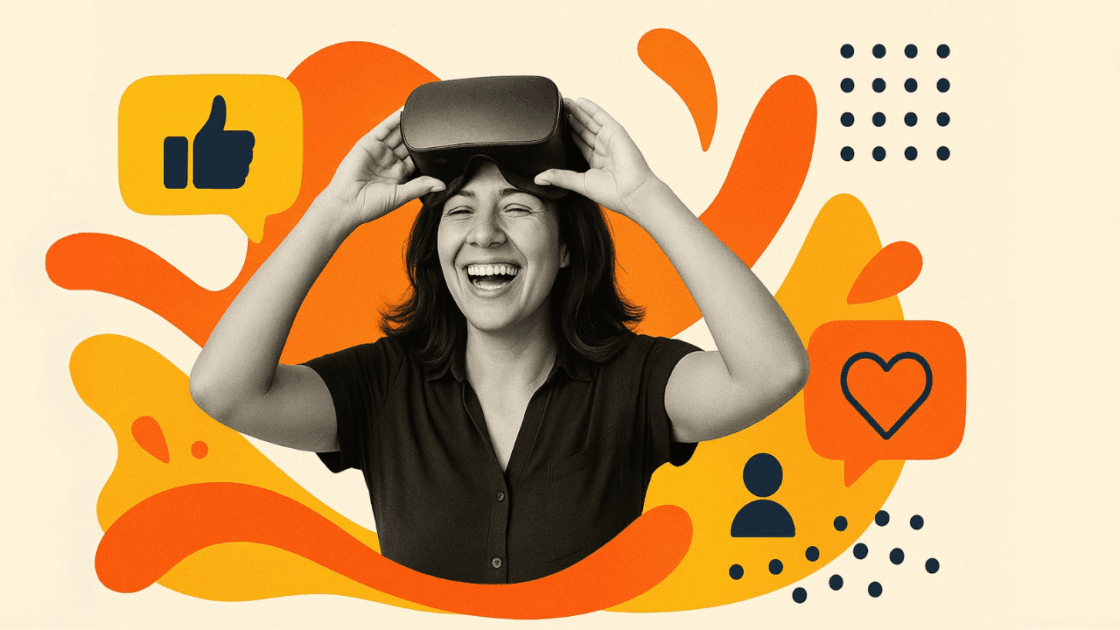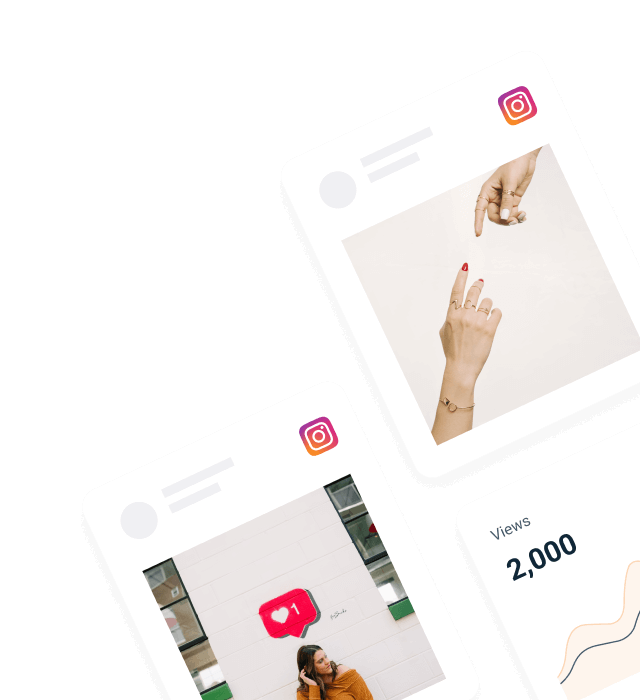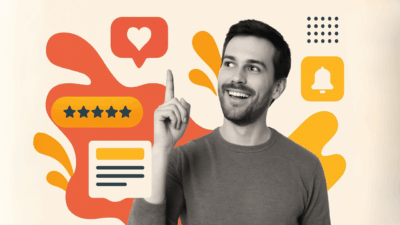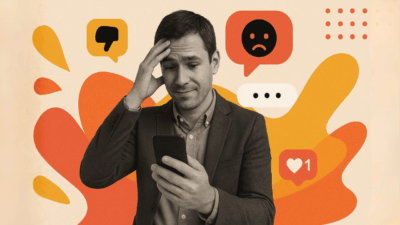Back in 2011, Coca-Cola launched its now-iconic “Share-a-Coke” campaign. The concept was brilliantly simple: swap out the classic Coca-Cola logo for real people’s names.
The result? A global phenomenon! People were scouring shelves to find bottles with their names or their friends’ names. Even better, they could customize bottles with their own names or messages, personalizing their experience further.
The impact was massive. Since its 2014 launch in North America, the campaign added 2% to sales and broke the losing streak of the last decade. It provides the perfect case study on how experiential marketing can build emotional associations, drive engagement, and deliver significant returns.
The best part is you don’t need to be as massive as Coca-Cola in order to take advantage of experiential marketing. For the purpose of this article, let’s keep experiential marketing techniques and campaigns basic and learn through real-life experiential marketing case studies. Let’s begin by providing a quick overview of what experiential marketing entails and how businesses can benefit.
What is Experiential Marketing?
Experiential marketing is a method that has mass appeal by offering experiential and memorable events created to emotionally connect a brand to consumers. This can be anything from event sponsorship, online or in-person, to complimentary samples at a grocery store.
Whereas conventional advertising and conventional marketing entail the transmission of messages using media such as print, television, or online advertisements, experiential marketing encourages consumers to be the active experiencers in events or activities through which messages convey the values, products, or services provided by the firm. This method creates a memorable experience, enabling the customers to experience your brand through the physical world and develop stronger associations than through the utilisation of passive advertising techniques.
Modern experiential marketing seamlessly blends online and offline elements, creating hybrid events and experiences that reach global audiences while maintaining the personal touch that makes these campaigns so effective. Whether by means of virtual and augmented reality product demos, experiential interactions, or physical immersive installations, today’s experiential marketing uses technology to develop more memorable and compelling brand interactions.
Experiential marketing is not a new concept. Companies have been using it for a long time. In recent years, however, experiential marketing campaigns and brand activation strategies have grown more advanced. The advent of new technologies, like extended reality, alongside a growing demand for omnichannel offline and online marketing experiences has led to some extremely creative marketing efforts and brand activation campaigns.
The Benefits of Experiential Marketing Campaigns
Lots of marketers use experiential marketing to promote products. It helps you:
1. Differentiate Your Brand
You can compete on similar products, but something unique—like an interesting product launch event or an experiential demo—gives individuals a cause to choose your brand versus the competition.
Consumers remember how a brand makes them feel. By creating immersive and enjoyable moments, your brand comes to be connected with pleasant emotions, creating lasting impressions and positive brand awareness that makes it harder to forget than the competition.
2. Increase Brand Awareness
Effective experiential marketing tends to draw in organic virality by means of word-of-mouth promotion, social references, and coverage by PR. Such marketing promotes the awareness of the brand and reaches prospective consumers beyond the immediate target audience.
Take the 2012 Redbull Stratos campaign, for example. It was watched by over eight million people on YouTube, translating to a 7% increase in sales.
3. Improve Customer Loyalty
To build brand loyalty and earn your customers’ loyalty, you need to deliver more than great products or services. You need to forge emotional connections with your target audience.
Experience marketing is a way to strengthen those emotional connections. It can help you show your customers that you share their values by drawing attention to the social movements and ideas you support. You can even make your customers feel special and appreciated with giveaways and samples, boosting your chances of greater loyalty.
4. Enhance Customer Satisfaction
Experiential marketing campaigns can boost customer satisfaction in several ways. First, they can educate customers and show them how to get the most out of the products you sell.
Secondly, they give you a chance to gather genuine data and insights from your customers that you might not find elsewhere. These insights into your customers’ goals, preferences, and priorities will help you develop better products, services, and customer service strategies.
Examples of Experiential Marketing Campaigns
Now that you understand the benefits of experiential marketing, let’s see how brands deploy experiential marketing tactics to drive awareness and loyalty.
1. Event Marketing: Peacock
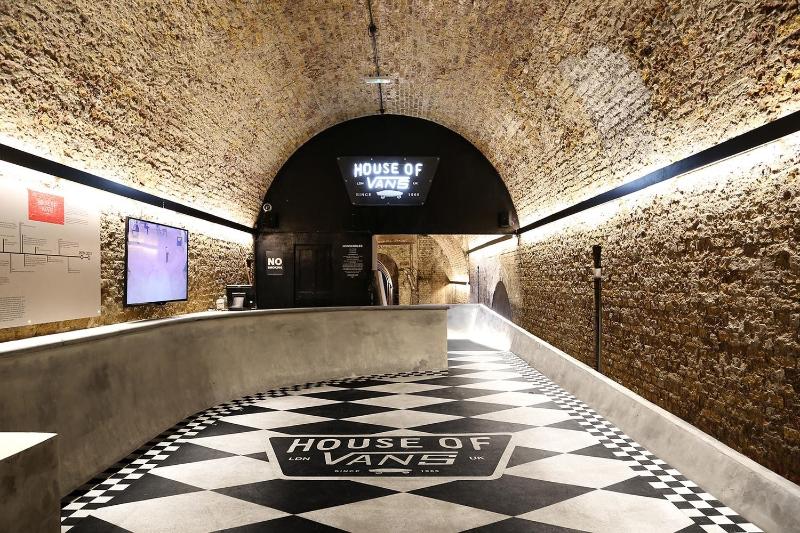
One of the most frequent and adaptable forms of experiential marketing is event marketing. Your experiential marketing events are all about delivering unique and memorable events, whether you’re launching a new product or you’re having a conference on the newest trends in your industry.
In 2022, the live event was sponsored by Peacock, a streaming service for videos. They created an adult playground where people could play huge games of chess or mini golf. The experience inspired thousands of social media shares and gave Peacock a chance to promote their latest shows.
How to Use Live Events for Experiential Marketing
One idea for using in-person events in experiential marketing is to host a “Behind-the-Scenes Immersion” event where your brand offers customers an exclusive, interactive experience tied to your product or industry.
Let’s say you’re a coffee brand. You may offer individuals a journey that takes them through the process of coffee production, including the acquisition of the beans through to optimizing the cup. The journey may feature hands-on stations where individuals can roast, grind, and prepare coffee.
For engagement, consider:
- Setting up a photo booth with coffee-themed props.
- Providing live streaming for those who can’t attend, with behind-the-scenes views and Q&A sessions.
- Creating a custom hashtag (e.g., #BeanToBrewLive) to coax the attendees to share their experience online. You can compile and showcase all the posts using the hashtag aggregator by Juicer.
- Setting up UGC collection stations where attendees can create content specifically for your brand, with immediate display on digital screens throughout the venue.
- Implementing real-time social media displays that showcase user-generated content as it’s posted, creating a dynamic feedback loop that encourages more participation.
2. Pop-Up Shops and Installations: House of Vans
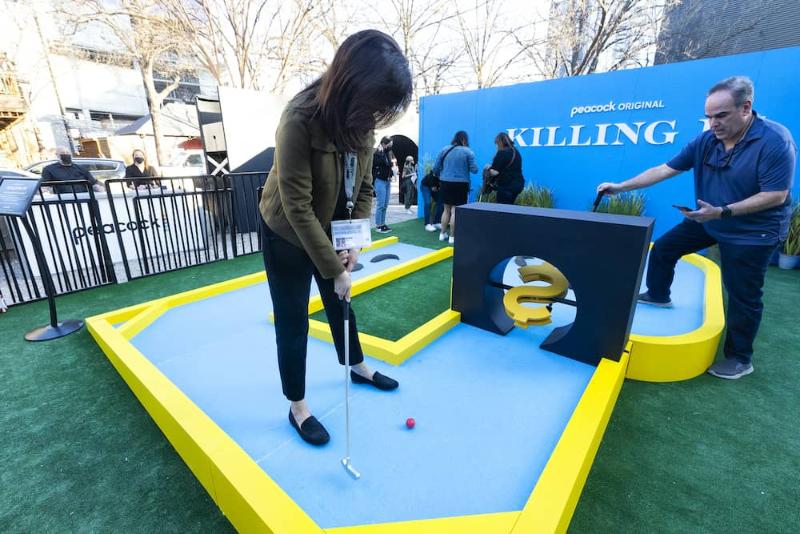
Pop-up events are another popular experiential marketing technique that has become increasingly popular in the modern age. They’re all about catching people off-guard with limited-time, exclusive experiences they wouldn’t expect to encounter in their day-to-day lives.
The limited-time nature of a pop-up installation makes it an exciting, exclusive experience for customers. This significantly increases your chances of customers talking about your company online or sharing images and thoughts in Instagram Stories and on other social channels.
Many of the best pop-up events even go viral, like the House of Vans campaign. The famous footwear company Vans launched a pop-up installation in London, complete with unique artwork and a skate park, to attract the attention of its specific target audience. It was a great way to strengthen emotional connections with customers and boost brand awareness for Vans.
How to Use Pop-Up Events for Experiential Marketing
Pop-up events work best in high-traffic locations that attract your ideal audience. Consider unexpected venues like rooftops, art galleries, or busy street corners. A prime location amplifies foot traffic and social media buzz. For example, a beauty brand could set up a pop-up in a popular park, offering free mini makeovers and skin consultations, drawing in people who are out enjoying the day.
Also, encourage attendees to share their experiences by creating Instagram-worthy moments, using branded hashtags, and offering incentives like contests or giveaways. You can display these on your Instagram social wall — driving reach and engagement.
Enhancing Pop-Ups with Interactive Technology:
For small to medium business owners, pop-up experiences don’t require massive budgets to be effective. Consider these interactive campaigns and elements:
- Virtual reality product demonstrations that let customers experience your products or services in immersive environments
- Augmented reality photo opportunities where visitors can interact with digital elements overlaid on the real world
- Interactive social media walls that respond to hashtags and mentions in real-time, creating a dynamic backdrop for your pop-up
- Gamified experiences where customers complete challenges or activities to unlock rewards, creating memorable experiences that strengthen brand engagement with your target audience
3. In-Store Experiences: Apple
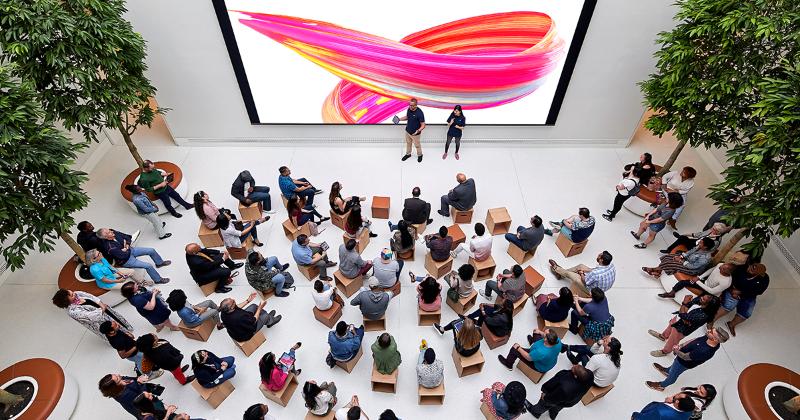
You don’t necessarily need to host a large event or set up a temporary store to capture the attention of customers with experiential marketing. You can also take advantage of the opportunity to deliver unique experiences to your customers through your own retail space or premises.
Hosting in-store events, like workshops or product demonstrations, is a great way to create more content you can share on your social media feed or through your website with an aggregation tool. It gives you a chance to show customers how you’re serving people like them and helping them get the most out of your products and services.
Apple is a great example of a company that uses experiential in-store events to its advantage. In addition to hosting limited-time events around product releases, the company also regularly schedules workshops and training sessions that teach people how to use its latest tools. This helps customers get more value out of Apple products and distinguishes the company as a clear thought leader.
How to Use In-Store Events for Experiential Marketing
Offer hands-on demonstrations where customers can see, touch, and try your products. This builds trust and helps customers feel more confident in their purchase decisions.
For example, a kitchen appliance brand could host a cooking demo, showing how its products make preparing meals easier and tastier.
4. Collaborative Experiences: Lululemon

Another way to experiment with experiential marketing campaigns is to partner with another company or entity. Brands can partner with celebrities, thought leaders and even ethical or non-profit groups to create a shared experience for customers with the same interests.
This is a great way to demonstrate your company’s values to your audience and reduce the cost associated with creating larger, flashier events. Plus, working together with another company or multiple people expands your brand reach. It gives you an opportunity to tap into the followers of various entities on social media and increase press coverage.
For example, every year, Lululemon hosts its flagship “Sweatlife” event, working with dozens of different exhibitors and thought leaders to create a unique experience for attendees. Collaborating with other brands helps Lululemon boost awareness of its event and attract the attention of various customers with distinct priorities and interests.
How to Use Partnerships for Experiential Marketing
The most important thing is to choose a partner whose brand values align with yours. Then design an event or campaign that highlights the strengths of both brands while creating a cohesive and immersive experience for attendees.
For example, a travel company and a luggage brand can co-host a travel planning workshop where customers can explore destinations while testing premium luggage options.
5. Guerilla Marketing Campaigns: 3M
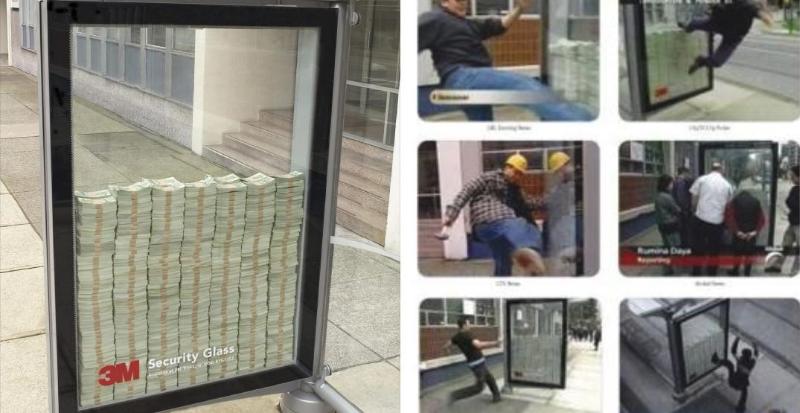
Finally, guerilla marketing campaigns are another excellent example of an engagement marketing strategy that generates incredible results. Although they require companies to take some risks and think outside the box, they’re a fantastic way to catch customers off guard and improve your chances of going “viral” with your next marketing campaign.
Guerrilla campaigns are designed to spark interactivity by offering unique experiences in unexpected spaces. A standout example is 3M’s famous campaign, where they locked $3 million behind two panes of their “break-proof” glass and dared passers-by to try breaking it.
The great thing about this campaign is that it validated how strong the company’s product was without asking customers to “buy” anything. It also generated a huge amount of online attention, with plenty of customers sharing videos and images of their attempts to get their hands on the money.
Maximizing UGC Collection During Physical Activations
User-generated content is the lifeblood of successful experiential marketing campaigns. Here’s how experiential marketers can systematically collect and display UGC during experiential events and physical activations:
Setting Up UGC Collection Systems
Real-Time Content Capture:
- Position branded photo stations at key interaction points throughout your activation
- Use QR codes that instantly connect to social sharing platforms with pre-populated hashtags
- Deploy roving photographers to capture candid moments and authentic reactions
- Create “content creation zones” with optimal lighting and branded backgrounds
Social Media Wall Integration:
- Install large displays showing live social media feeds using tools like Juicer’s social wall platform
- Set up hashtag aggregation to automatically collect posts from multiple social platforms
- Moderate content in real-time to ensure only appropriate posts are displayed
- Feature the best user-generated content prominently to encourage more participation and enhance the overall brand experience
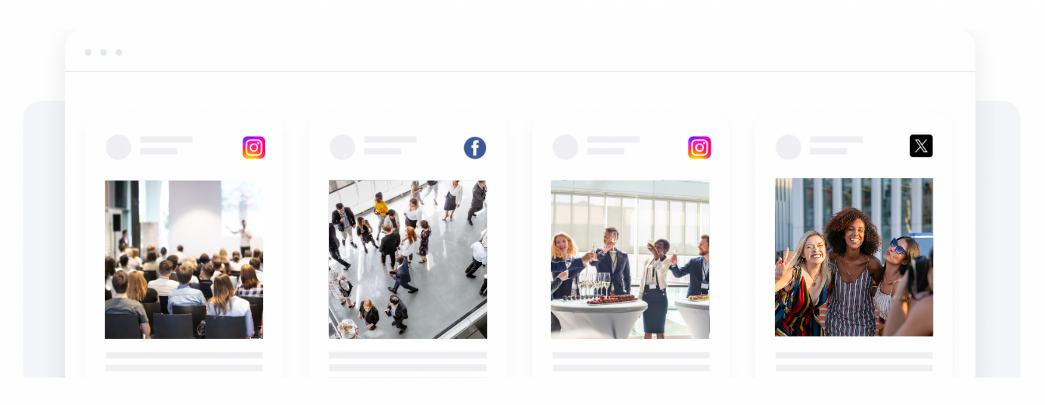
Encouraging Authentic Participation:
- Train staff to naturally suggest photo opportunities without being pushy
- Create shareable moments that feel organic to the experience
- Offer small incentives for social sharing, but make the experience valuable even without rewards
- Use social proof by showing others’ posts to encourage more participation
This systematic approach to UGC collection transforms single-day experiential campaigns into ongoing marketing assets that continue generating value long after the event ends.
How to Use Guerilla Campaigns for Experiential Marketing
Use humor or shock value to capture the audience’s attention and spark curiosity. For example, let’s say you’re a beauty brand. You can set up a pop-up installation with a large mirror display in a high-traffic area (like a mall or busy plaza).
The “mirror” uses augmented reality (AR) to show participants how their skin might look after prolonged exposure to environmental damage if left unprotected—wrinkles, sunspots, dryness, and other effects appear in real-time.
Discover the Power of Experience Marketing
Experiential marketing campaigns are a transformative way to revolutionize your advertising strategy. They help you capture the attention of your target audience through immersive experiences that create lasting emotional connections and generate authentic word-of-mouth marketing opportunities.
Building Emotional Connections Through Experience
The most successful experiential marketing campaigns tap into human emotions by creating personal experiences that resonate on a deeper level. Whether you’re a small business owner looking to differentiate from competitors or industry professionals seeking to strengthen brand identity and customer loyalty, the key is designing experiences that create memorable experiences and make people feel something meaningful about your brand.
Consider how each touchpoint in your experiential campaign can strengthen the emotional connection:
- Surprise and delight moments that exceed expectations
- Personalized interactions that make customers feel valued and understood
- Shared experiences that create community and belonging
- Achievement and recognition through gamified elements or exclusive access
Leveraging Technology for Maximum Impact
Modern experiential marketing seamlessly integrates digital and physical elements to create hybrid experiences that reach broader audiences while maintaining personal connections. With tools like Juicer.io, you can amplify your experiential marketing impact by:
- Creating dynamic social media walls for events and in-store experiences that showcase real-time user-generated content
- Implementing hashtag aggregation systems that automatically collect and display customer posts across multiple platforms
- Establishing ongoing social proof by featuring customer-generated content from your events on your website and marketing materials
Getting Started with Experiential Marketing
Whether you’re planning your first experiential campaign or looking to enhance existing marketing efforts, remember that effective experiential marketing strategies focus on creating authentic value for your audience. Start small, focus on your core brand values, and always prioritize the customer experience over promotional messaging.
The investment in experiential marketing pays dividends through increased brand awareness, stronger brand loyalty, and authentic user-generated content that continues marketing your brand long after the initial experience ends. These marketing campaigns provide actionable insights into customer preferences and help move potential customers through the marketing funnel more effectively than traditional advertising alone.
Sign up for a Juicer.io account to transform your experiential marketing campaigns with powerful social media aggregation and display tools that turn single events into ongoing marketing assets.
